On the second to last night I spent at Haverford, my suitemates and I gathered in the common room. We curled up in front of the projector that we had all pitched in to buy. We were going to watch one more movie together before being sent away for quarantine. As we perused Netflix, one childhood favorite caught my eye–Guillermo del Toro’s 2004 Hellboy. Maybe because I used to watch it five times a year before I could even do addition, maybe because it’s a paragon of storytelling, Hellboy has always been a source of comfort and familiarity to me.

After finishing my last appetizer, I still had some ideas and questions about how the grotesque can amplify sympathy for “monstrous” characters. To delve deeper into this question, I decided to once again seek refuge in this universe of demonic Nazis, Rasputin, the moon as a kraken’s egg, and especially Ron Perlman’s body cemented in red prosthetics.

To focus my critique, I am using Bakhtin chapter 5 (pages 315-41) as a lens through which to view the movie. This portion of Bakhtin explains what features make Pantagruel the ideal Grotesque body. Although the movie and the comics it was based on contain a rich amount of Grotesque and carnival worldbuilding, I will also be focusing on the body of Hellboy in the 2004 film.
In chapter 5 of Rabelais and his World, Bakhtin argues that the circle of life is an important aspect of the Grotesque. As one body ends, another begins. In Pantagruel’s case, he was so large he killed his mother during birth. In contrast, baby Hellboy was brought to Earth when Nazis recruited Rasputin to conduct a demonic ritual to help them win the war. Although Hellboy’s birth scenario is much sillier and eldritchian, his birth also involved death–Nazi scientists are squished by falling monuments, Allies and Nazis shoot/grenade each other to death, Rasputin gets sucked into a void while his lackey is run through by a pole.

Directly after this “birth,” Hellboy shows that he is Grotesque in another way–his love of food. Professor Broom, a catholic researcher who studies the paranormal, coaxes Hellboy into his arms with a Baby Ruth candy bar.
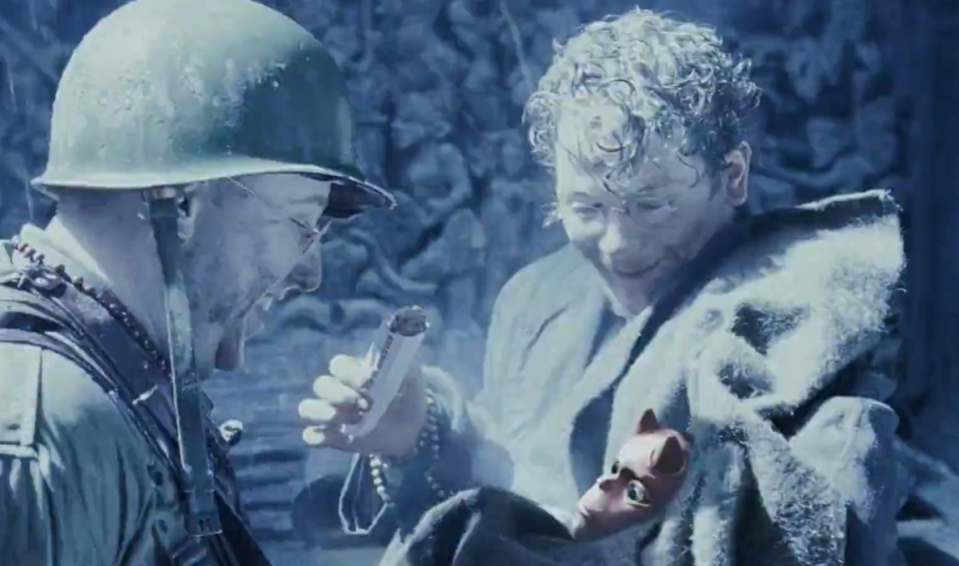
This love of food and excess continues into his adulthood. The movie catches up to 2004, where we are introduced to John, selected by Professor Broom to be Hellboy’s caretaker and friend. John acts as an audience surrogate, comically responding to the sights and scenes at Bureau for Paranormal Research and Defense, where Hellboy resides, away from the eyes of the public. John’s first task is to meet Hellboy and bring him one of his six enormous meals a day. Hellboy’s room is messy, full of many TVs, and overrun by cats.
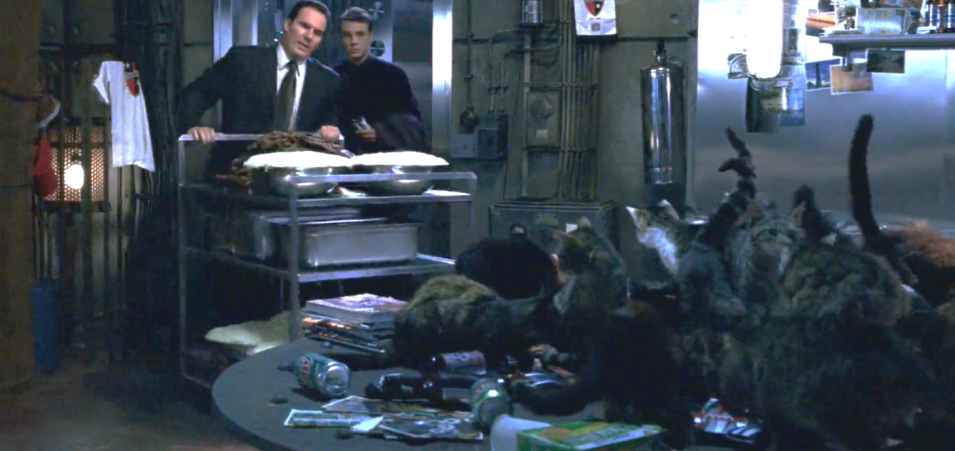

Two other themes that Bakhtin discussed in chapter five stood out to me when thinking about Hellboy. Bakhtin focuses on “protruding” body parts as Grotesque. Large noses, he argues, are not Grotesque because they are animal or beak-like–they are Grotesque because they are reminiscent of a phallus, in the lower body stratum. He also discusses “cosmic fear,” a fear of hell and cosmic destruction. Bakhtin argues that the Grotesque lower bodily stratum, while being hushed up and privatized by the new canon, is actually the antithesis of cosmic fear, as the lower bodily stratum is familiar and universal.
As a demon with a ginormous hand, tail, and two horns, Hellboy meets these conditions of the Grotesque the entire way through the movie. However, these two Bakhtinian themes especially play together at the climax of the movie. Towards the end of the movie, Rasputin threatens to murder Liz, Hellboy’s girlfriend, unless Hellboy takes on the demonic duty of calling the creatures living in the moon to hatch and come destroy Earth. Once Hellboy agrees to these terms, his horns grow, his breathing becomes more animalistic, and he does not speak English while in this phase.
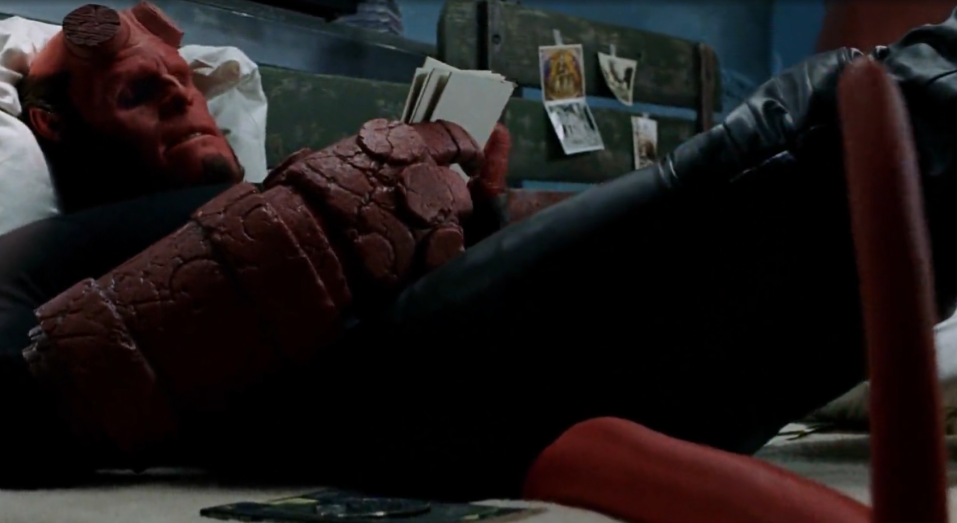
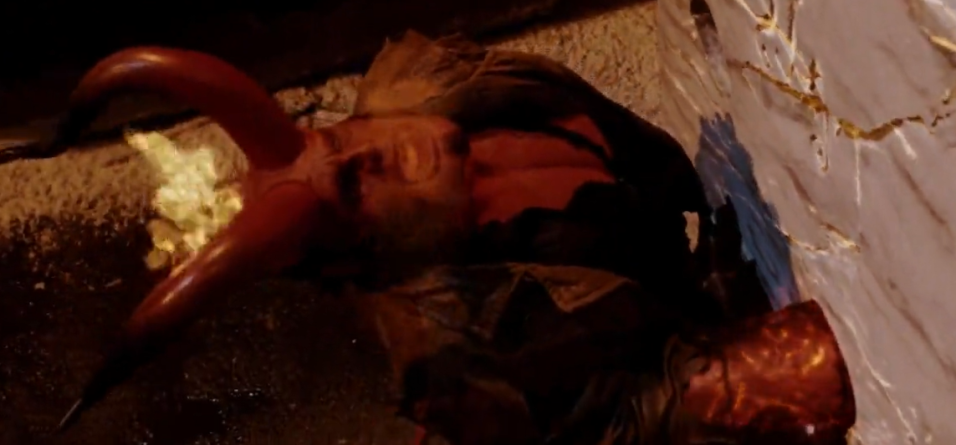
Just as the big bad descends from the moon to bring about armageddon, John throws Hellboy’s rosary at him, reminding him that he is more than a demon–he is also a hero who fights villains. Hellboy then snaps off his horn, returns to his “normal” state, kills the bad guys and embraces Liz.

Rasputin wanted Hellboy to use his body as nothing more than an object, a key to turn a stone that in turn called a monster to Earth. However, Hellboy rejects that fate. He instead wants to use his body for pleasure–to eat hundreds of pounds of pancakes, to pet his many cats, to smoke fine cigars, to drink beer, to hold his girlfriend, to joke around with his friends, to chase villains, to share cookies with children. As the movie ends with a scene of Hellboy and Liz embracing, a voice-over from John concludes that a man is made not from his appearance, but from how he chooses to conclude things. In the end, Hellboy ends up not rejecting his exceptionally Grotesque body, but using it to bring himself and those he cares about joy.
Also, can we please acknowledge that the fishman from Shape of Water is just a weirder version of Abe Sapien that forgot how to talk? They’re even both played by Doug Jones and directed by del Toro!

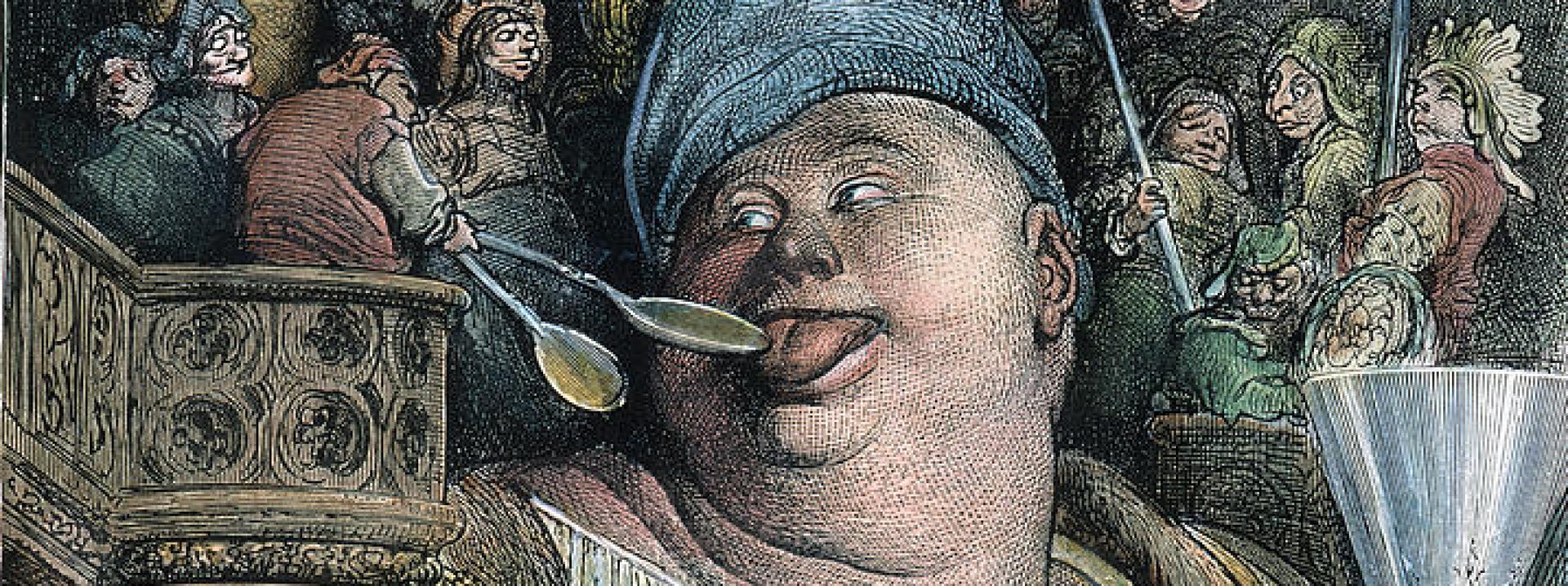
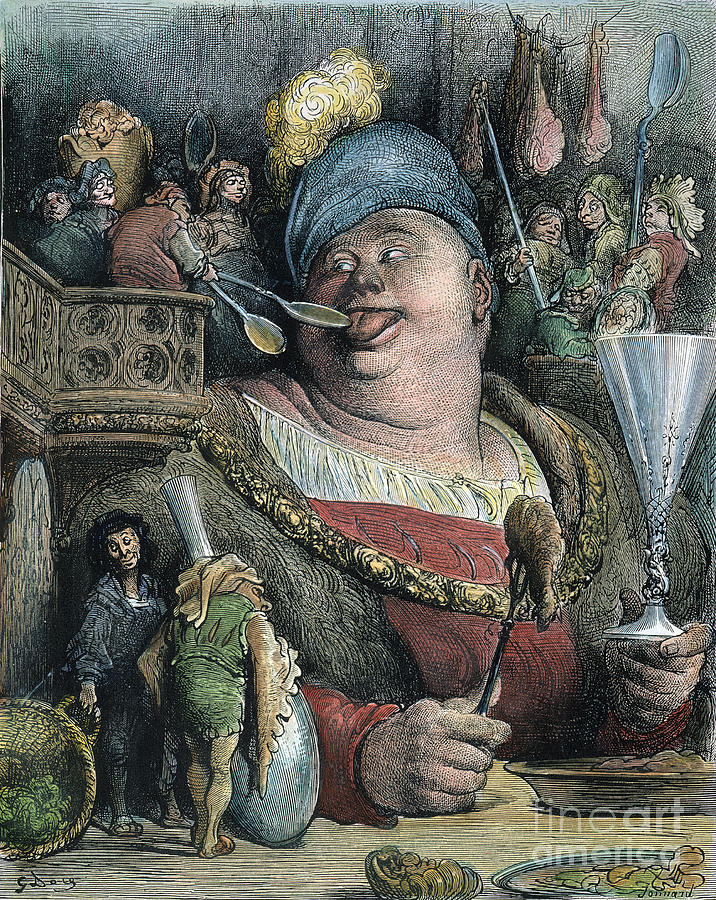
Hi Juliana,
This was so much fun to read! Thank you! I’ve never seen Hellboy, but reading this (and the newfound knowledge that it is available on Netflix) have moved this film to the top of my quarantine list. In looking at the images you’ve provided, I find myself particularly drawn to Hellboy’s filed-down/stump-like horns. It has made me think about ways in which the grotesque is reduced to normalcy (or something resembling it) in the name of making others more comfortable. Specifically, this is an interesting example because Hellboy’s grotesque horns represent a threat to one’s physical safety, rather than (as we often see in our world) grotesque or non-normative bodies representing a threat to one’s mental comfort or their ideas of what to expect from the human body.
Hey Juliana! I have to admit, I’ve never seen Hellboy, but this was such an enjoyable final project to look through! I think the way you found themes of the grotesque throughout the movie is really impressive, and by the end had me pretty convinced that it must be inspired by studies of the grotesque, although I doubt this is the case.
I think Allison’s comment on the horns is really neat. It’s interesting how the horns determine what form of himself (could be understanding the movie totally wrong) he’s choosing to accept: the demonic destroy the world and everything in it side, or the more human side. It’s very sweet that embracing his inner demon is for the sake of love, though.